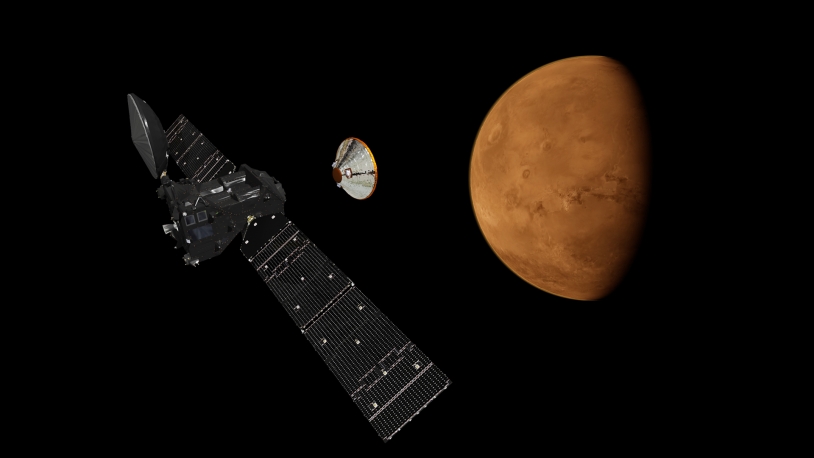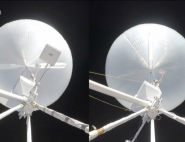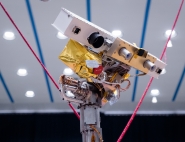ExoMars 2016
ExoMars 2016 is the first part of the ExoMars mission, comprising an EDM demonstrator (Entry, descent and landing Demonstration Module) called Schiaparelli, carried on the Trace Gas Orbiter (TGO) satellite. They were launched together atop a Proton rocket on 14 March 2016 from the Baikonur Cosmodrome. The journey to Mars lasted 7 months.

Artist’s impression of TGO releasing Schiaparelli towards Mars. Credits: ESA
On 16 October 2016, the EDM separated from TGO and prepared to fly a hyperbolic entry trajectory. An anomaly during the descent sequence caused the test module to crash into the surface at high speed after a free fall of 4 kilometres, but data enabling analysis of the atmospheric re-entry phase were successfully collected.
On the same day, TGO was put into a highly eccentric Mars orbit for four days. From April 2017 to early 2018, it then performed an aerobraking phase to circularize its orbit at an altitude of 400 km. It now completes each orbital revolution of the red planet in 120 minutes. It is being used as a science satellite to study Mars’ atmosphere, and will serve as a telecommunications relay for the ExoMars 2020 landers.



